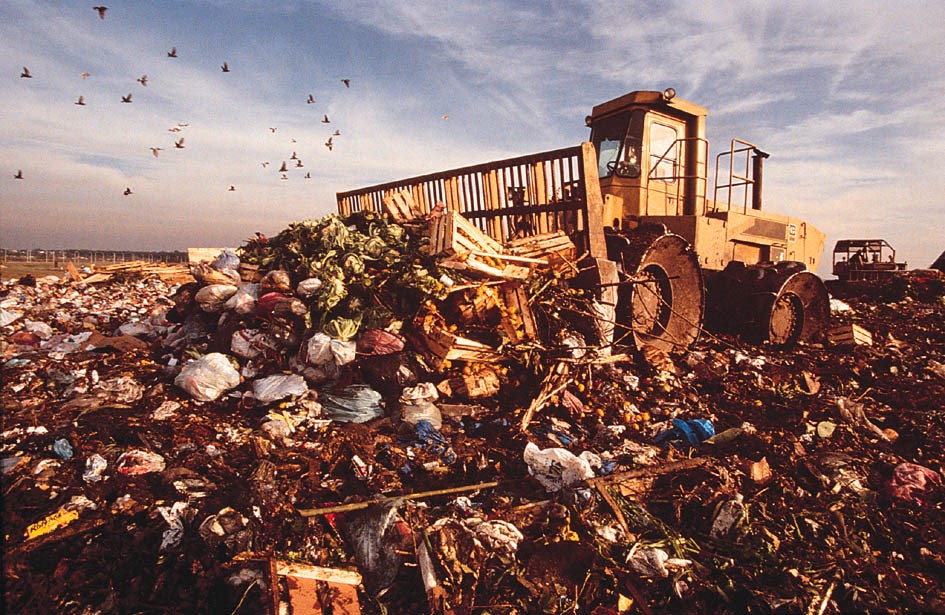St. Albert will have to bring in landfill bans if it wants to have any chance of meeting its new 2020 waste reduction goal, says the head of Alberta's recycling council. The city released its 2014 Report on the Environment this week.
St. Albert will have to bring in landfill bans if it wants to have any chance of meeting its new 2020 waste reduction goal, says the head of Alberta's recycling council.
The city released its 2014 Report on the Environment this week. The annual report tracks the city's progress toward the eight goals in the city's environmental master plan.
The report suggests that the city made gains last year on its goals for land use and water conservation.
The city met its goal of having at least 30 units per net residential hectare in all new area structure plans, the report found: Jensen Lakes had 30, and the Range Road 260 plan had 37. Both fell well short of the city's goal of having 30 per cent of all new ASPs dedicated to medium or high-density development, though.
These targets really depend on what's proposed for development in any given year, said Mike Mellross, the city's environment manager.
“It's really market dependent.”
City residents continued to show water wisdom last year by using just 251 litres per person per day, the report found – one litre less than 2013 and just 51 away from the city's 2020 target.
This is an encouraging trend, one that's likely due to public education and more availability of water efficient fixtures, Mellross said.
“If you extrapolate the trend, we will be pretty close to the target by 2020.”
The city is debating a water conservation bylaw that would mandate water efficient fixtures in new homes and renovations and restrict outdoor watering in the summer. Mellross said his department was also looking to bring in escalating water rates like those used in Edmonton.
Mellross said the city was putting a twist on another long-running water conservation measure this year: the rain barrel program.
Instead of selling them at the front desk of city hall, which was resource intensive, the city has partnered with L.B.H. Building Centre to sell them at their location in the Riel Industrial Park. They'll have 330 barrels available for $50 each on a first-come, first serve basis.
The barrels go on sale May 2.
Trash, transit, GHGs backslide
The report shows that the city may be backsliding when it comes to waste reduction. City residents kept 65 per cent of their trash out of the landfill through recycling and composting last year, down from 66 the year before and 67 in 2012.
The city has aimed to reach 75 per cent diversion by 2020.
That's a very ambitious target, said Christina Seidel, executive director of the Recycling Council of Alberta. St. Albert has already taken the important step of using differential pricing to discourage waste, and could reach 70 per cent through aggressive social marketing.
“Honestly, if you want to get over 70 per cent, you pretty much need a regulatory component,” she said – specifically, bans on certain types of waste.
St. Albert has a really good residential waste diversion program, but Seidel notes that residential waste comprises just 33 per cent of Alberta's trash. It might be better for the city to turn its attention to the institutional, commercial and industrial (ICI) sector instead, which produces about 40 per cent of the province's waste.
“Don't just put it all on the residents. Take a look at the businesses.”
Calgary now has an ICI strategy that will charge higher rates for certain types of waste – such as cardboard – at the landfill, Seidel noted as an example.
St. Albert also seems to have stalled on its transit goal of having ridership grow faster than the city's population. The report found that the city's ridership dipped 1.8 per cent over the last three years while the city's population grew by 3.7.
More people on the bus means fewer cars on the road and less greenhouse gas emissions, Mellross said.
The main problem here is that the city has maxed out on park-and-ride stalls at a time of high population growth, said St Albert Transit director Bob McDonald. We've also seen a drop in enrolment at the University of Alberta, which means fewer students riding the bus.
The new park-and-ride on Campbell Road could help here, as would the upcoming LRT line to NAIT, McDonald said. They've also tweaked several routes this month to improve service to downtown.
The city's corporate greenhouse gas emissions also continued to climb, reaching 33,217 tonnes last year, the report found – a long way from its 2020 target of about 25,000.
The city plans to do energy efficiency audits of 11 buildings this year, including St. Albert Place and Servus Place, to find ways to reduce their emissions, Mellross said. They also hope to add electric vehicles to their bus fleet.
The full report is available in this issue of the Gazette.
